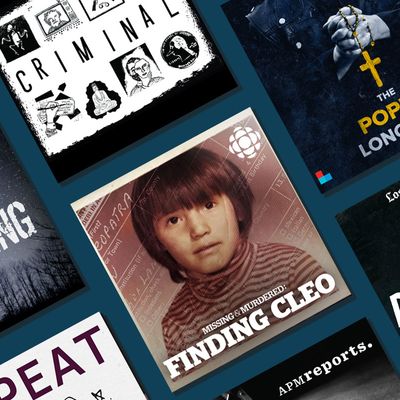
All week long, Vulture is exploring the many ways true crime has become one of the most dominant genres in popular culture.
You can’t swing a cat around the Apple Podcast charts without hitting a true-crime podcast. Whether a piece of investigative journalism, a documentary that’s more literary or anthropological in its pursuits, or something that feels at home on HLN, the genre is a ubiquitous force in podcasting.
It is also, naturally, a complicated one. Every project is a string of delicate responsibilities, a minefield of ethical conundrums. So we reached out to eight teams to find out the biggest questions they ask themselves when they’re making a true-crime or crime-related podcast.
Their responses have been edited for clarity.
Does it feel bad to contact the victim?
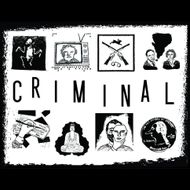
Lauren Spohrer is the co-creator of Radiotopia’s Criminal, an anthology podcast that tells stories about crime.
Not all of the stories we tell on Criminal are violent. When we’re deciding whether or not to pursue a violent crime, we start by thinking about the victims. Is the victim living? If so, let’s contact them. If it feels bad and exploitative to contact them (to ask them to participate and/or to let them know we’re doing the story), then we just don’t do the story.
If the victim isn’t living, we ask ourselves how their friends and relatives might feel when they hear that their loved one is being talked about on a podcast — especially if the perpetrator is the storyteller. It’s insincere to pretend we need to be “tough” reporters who put facts ahead of the human beings impacted. We’re digging up personal stories and making choices about how we frame them. Not to think about who is listening risks compounding people’s pain for your own benefit.
Is there enough tension?
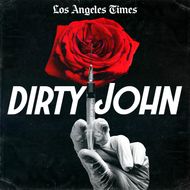
Karen Lowe was the senior producer on Dirty John, the true crime podcast from Wondery and the Los Angeles Times about a woman who becomes the victim of an abusive serial con man.
I have a mental checklist of questions. First, is what we’re saying true, and how do we know that? Is there enough tension and action in each scene to keep the listener engaged? Have we left just the right number of bread crumbs for the listener to follow the story without sapping a scene of suspense or giving away plot points? Is the writing conversational? I spend a lot of time weeding out language used in print stories that people just wouldn’t use speaking to one another.
And then there’s dialogue and scene-setting. When you’re using recorded audio like we did in Dirty John, well, those characters speak for themselves. But often their real voices were not very dramatic. After all, they’re regular people, not actors. So how do you fix that? I played their voices over and over in my head, asking myself, “How can I help them express themselves better?” Maybe we write into the script something about their body language, or include a telling past event, or reference a television program they watch, or what brand handbag she carries. It’s amazing how just a few hard jewels of detail can amp up a scene.
Does this story matter?
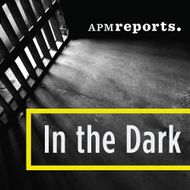
Samara Freemark is the senior producer of American Public Media’s In the Dark. The podcast’s first season focused on the 1989 disappearance of Jacob Wetterling in Minnesota, a case that led to the first national mandate that states establish registries of convicted sex offenders. Its most recent season examined the case of Curtis Flowers, a black man in rural Mississippi tried for the same crime six times by the same white attorney.
Our show is made by a team of investigative reporters and producers, working out of an investigations and documentary unit at a news station, so that’s the sensibility we bring to our work. Here are some of the questions we’re always asking ourselves as we report and produce the show:
Is someone in a position of power misusing their authority in some way? We are far less interested in criminals than we are in the people whose job it is to provide justice. We wouldn’t do a story that was merely about a horrible crime, no matter how bizarre or colorful.
Does this story matter? There have to be real stakes to it, and the story has to have the potential to impact people’s lives in some tangible way. What does this story tell us about larger issues? We want our work to inspire our listeners to interrogate the people in positions of power in their own communities.
Are we telling this story in the most sensitive, responsible way we can? Crime stories, almost by definition, involve people who have suffered in some way, often deeply. We do our best to handle those stories with care, to avoid sensationalism at every step of the process. When it comes to other aspects of production — the details we choose to include in the writing, the music choices, the sound design — we try to err on the side of restraint.
How do we make it feel like it’s not true crime?
Julia Lowrie Henderson is a producer on ESPN’s 30 for 30 Podcasts. She reported, produced, and hosted its latest season, Bikram, which took listeners into the complicated world of Bikram yoga, a community struggling with its identity in the wake of sexual-assault allegations levied against its founder, Bikram Choudhury.
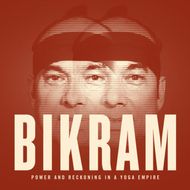
When I approached Bikram, one of the biggest questions for me was: How do I make this feel like it’s not true crime? I mean that in the sense that true crime often brings with it the expectation of proving something or finding a culprit. That can feel like a narrative burden, because it so easily becomes what drives the narrative. I came into this story having done a lot of research and having had a bunch of background conversations with sources knowing that I believed the women who had come forward accusing Bikram of sexual assault and rape. I was wary of getting caught up in the old habit of making something that feels like it puts victims on the stand and forces them to defend their allegations and their character. The far more exciting challenge to me was to piece together how these things happened, and why — and what all of that says not only about the people and the community involved, but about us and our society in general.
Are we helping more than we’re hurting?
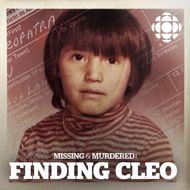
Connie Walker is the host of the Canadian Broadcasting Corporation’s Missing and Murdered. The most recent season, Finding Cleo, is about the disappearance of an indigenous child who had previously been taken from her family in Canada by child welfare workers and relocated to the United States.
I try to center the victim and families’ experience in our storytelling. I’m also an indigenous woman, so I think my own experience really informs my reporting. For decades, this issue of missing and murdered indigenous women and girls has been ignored by society. Now that people are starting to pay attention, I try to ask myself, “Are we helping more than we are hurting?”
I think this empathetic approach can actually draw in more people and help them understand the issues that all indigenous people face in North America. So while our seasons focus on helping families who are seeking justice and trying to solve a mystery (who killed Alberta Williams? Where is Cleo?), it’s equally important to answer the bigger questions. Why are indigenous women disproportionately victims of violence? Why have so many indigenous women gone missing from the Highway of Tears? Why are indigenous kids taken into care in such large numbers? Why do so many cases remain unsolved?
How do we convey that not everyone’s truth is THE truth?
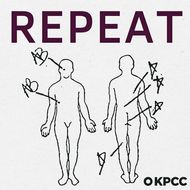
Arwen Nicks is a senior producer of on-demand at KPCC, where she worked on Repeat, the Los Angeles public radio station’s investigative podcast that looked into a string of officer-involved shootings in South Los Angeles and the difficulty of penetrating a law enforcement accountability system shrouded in secrecy.
With Repeat, I was lucky to be working with reporter Annie Gilbertson (who reported and hosted the podcast), and much of what I’ve usually worried about when working on other projects wasn’t an issue with this show because of her unwavering ethics. When working with true crime, you face questions like: How do I make sure that the audience understands that not everyone’s truth is the truth? How can I respect the lived trauma of these events and also get someone to relive it on tape? How do we make sure that we as journalists are not being used as a subject’s vehicle to get what they need? How do I make sure this sounds incredible when really what I am looking at is a daunting stack of documents that make me feel like I am trapped inside a stock-photo version of stress?
One thing Annie was always quick to point out was that these cases are the anomalies, not the norm, and if we portray them as anything else, that’s both lazy and false. In reality, most of those incarcerated and prosecuted do not fall into clichés of the supervillain or innocent underdog. Their stories — the Everyman stories — can be more instructive about the nuance and problems of justice in America.
Can we make a difference?
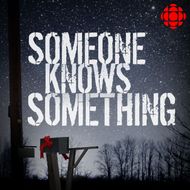
David Ridgen and Arif Noorani are the host and executive producer, respectively, of the Canadian Broadcasting Corporation’s Someone Knows Something, which sports an unconventional structure: Ridgen investigates cold cases with the active participation of the victims’ families. The most recent season sees Ridgen looking into the unsolved murder of Wayne Greavette, who was killed by a letter bomb two decades ago.
Someone Knows Something is a kind of investigative therapy for victims’ family members as much as it is a “true-crime podcast” — families who feel more could be done and should be done. In moving forward on cases, the biggest general question is probably: Can differences be made through our process of investigation? Do we have enough information to examine the case more deeply than has been done before? What are the risks and can they be managed and undertaken through the lens of the CBC’s legal team and journalistic handbook?
Some other key elements we need before we decide on a case (and we dig through dozens before making a decision): a family member who wants the case to be investigated further and is willing to be part of the narrative journey; investigators or ex-investigators who are willing to let us inside the case; and a community that has felt the larger impact of what happened.
Do we have it right?
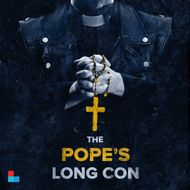
R.G. Dunlop and Jacob Ryan are journalists at the Kentucky Center for Investigative Reporting. Together, they reported out The Pope’s Long Con, a Peabody Award–winning investigation into a local politician with a glorified past — Representative Dan Johnson — that ultimately unearthed a history of criminal behavior, including allegations of sexual assault by a teenage family friend and church members.
When the Kentucky Center for Investigative Reporting does a story dealing with crime — or with any issue, for that matter — the biggest question we ask ourselves is: Do we have it right? Not just nearly right. Not just close. Not just almost. Right. One-hundred percent right. That means not only getting the facts straight and having documents and/or interviews to support them. That also means putting those facts in the proper context so they’re fairly presented. And it means giving people affected by those facts the opportunity to respond to them. When we’ve done all that, we think we’ve got right. That’s the process we applied to The Pope’s Long Con, over and over again. And seven months later, no one has raised a single substantive challenge to anything we reported. So we think we got it right.



